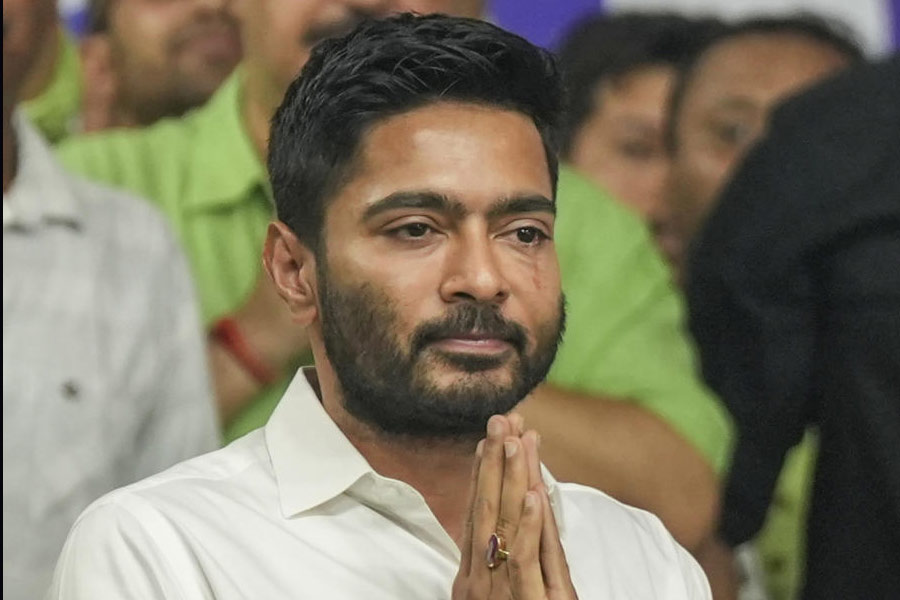Young India is all over England this summer: Gurinder Chadha's Bend It Like Beckham has conquered the box-office, queues to watch Andrew Lloyd Webber's musical, Bombay Dreams, grow longer every week, Sanjeev Bhaskar's TV sitcom, The Kumars at No 42, is causing a laugh riot on BBC TV, and teenager Isha Guha has been selected for the English women's cricket team.
No surprise then, that the fortunes favouring youth extended to the visiting Indian cricket team. In every victory that captain Sourav Ganguly's men carved out over their rivals, England and Sri Lanka in the NatWest trophy, the young guns - Yuvraj Singh, Mohammed Kaif, Virender Sehwag, Dinesh Mongia, Zaheer Khan, Ashish Nehra, Harbhajan Singh and others - played stellar parts. Displaying consistency and maturity beyond their years, they took on the challenge and responsibility to win for their country, with or without a Sachin Tendulkar or a Rahul Dravid for company. On the playing fields of England, before an audience high on both beer and bhangra, Ganguly's Spice Boys have truly and finally arrived. This summer India has found the collective face of its cricketing future.
They are Ganguly's boys all right. Not only because these players have emerged in the past two years during his tempestuous tenure at the helm but also because the cultured left-hander from Calcutta was the prime mover in the 'power to the youth' campaign. Like a gambler who places his bet on a promising filly, Ganguly reposed immense faith in cricketers who had barely proved their credentials at the domestic level. Even when his rookies kept failing with the bat and ball and when motives were attributed to his backing of certain players, the Indian captain was unwavering and is now reaping the rewards of his foresight. 'Ganguly backed them vocally and whole-heartedly. He should get the credit for bringing in these boys and then persisting with them,' says former test batsman Abbas Ali Baig.
It has been a rollercoaster ride to adulation and acclaim for the new kids on the block. Some have earned it the hard way after a long struggle, some found it instantly and some are yet to establish themselves fully. Harbhajan Singh, only 22 and already a veteran in this brave new bunch, overcame chucking allegations, disciplinary problems and his father's demise to establish himself as a premier performer in world cricket.
On the other hand, Yuvraj, like the poet Byron, woke up one morning and found that he had become famous after playing just one great innings against Australia in the ICC one-day knock-out tournament in Nairobi in October, 2000. For the next few weeks, he was deified. Then came the long months of vilification as the teenager from Punjab failed to measure up to the unreasonably high expectations of a cricket-mad country. Like father Yograj Singh, a Kapil Dev contemporary who played just one Test match for India, it seemed that the son too would fade away soon.
That would have been tragic, for Yograj had sublimated his frustration by grooming his son for success. The story goes that when a young Yuvraj once came home after winning a gold medal in the under-14 speed skating championship, his father snatched the medal and threw it away because he couldn't bear the thought of his son playing another sport. Since then, Yuvraj, who loves watching Preity Zinta movies and eating kadhi chawal, has paid his dues. In England, there is a reformed and upgraded version of the cricketer on view. The middle-order batsman, who can also turn his arm around, has produced a string of match-winning performances and effaced the label of inconsistency that had stuck with him like chewing gum on his sole.
If the Yuvraj story is about a father pursuing his private dream and realising it through his son, there are other stories about the youth in Indian cricket, less flamboyant but equally compelling, that need to be told. These are careers wrested with blood, sweat and tears one will never know of. Careers made out of extraordinary dreams that ordinary working men and women dream for their children.
Few know that young wicket-keeper Ajay Ratra's entire life has been a struggle. Just like his ongoing struggle to find a place in the one-day playing eleven. His father, Surjan Lal, used to play the dhol at weddings before taking to selling eggs in Faridabad, Haryana. Then there is Waseem Jaffer, the Test opener from Mumbai, whose father is a bus driver and whose elder brother made pickles to help finance his brother's ambition of being a top-class international cricketer.
The stockily-built Virender Sehwag, son of a flour mill owner and fan of Kishore Kumar, too has had his share of ups and downs in his brief international career. But of a different kind. The 23-year-old from Najafgarh, a downmarket suburb in west Delhi, was thrust into the middle of a cricketing spat between the Board of Control for Cricket in India and the International Cricket Council after having been singled out by match referee Mike Dennes for a one-match suspension during the 2001 South Africa tour. Now, as the buccaneering partner of captain Ganguly in one-dayers, he too has made his mark on this tour with a series of electrifying cameos. It is his success as an opener that has enabled the Indian strategists to push maestro Sachin Tendulkar down the batting order, giving the team a more balanced look. 'He provides the coach and the captain with several options,' says national selector Madan Lal.
That's not all. Mohammed Kaif, the 21-year-old from Allahabad, who reminds one of a young Mohammed Azharuddin, has offered the perfect insurance down the lower middle-order in the event of a batting collapse. Southpaw Dinesh Mongia, 25, has also adjusted well to the extreme demands of world-class competition. And, the contributions of pacemen Delhi's Ashish Nehra and Baroda's Zaheer Khan too have caught the notice of everybody, including former England cricketers-turned-reporters. 'The emergence of the two left-armers, Nehra and Khan, suggests that Javagal Srinath will not be missed too much,' writes former international Vic Marks in the Daily Telegraph. And Tinu Yohanan, in the words of speedster Javagal Srinath, 'the fittest member in the team,' has the best pedigree to succeed. He is the son of T.C. Yohanan, India's best ever long jumper, who won the gold medal in the 1974 Teheran Asian Games.
Yohanan, who hails from Kerala, is a rare South Indian in this bunch of new kids on the block. Most of them come from the northern India heartland: Delhi, Punjab and Haryana. It is a throwback to the Eighties when North Zone dominated Indian cricket. There are no theories why. Only that the power of balance has consistently shifted from one zone to another in the past few decades. The West dominated in the Seventies, the South in the Nineties. It's North's turn again.
The influx of youth has brought down the average age of the squad. During this series, the team for the shortened version of the game has 10 players who are either 25 years of age or below in the 15-member squad. And reserve wicket-keeper in the test squad, baby-faced Parthiv Patel, will not be able to watch a movie like Bad Company, the latest Anthony Hopkins starrer. It is an adult film and he is only 17.
With their willingness to run singles hard and throw themselves about the field throughout the game, Ganguly's boys are extremely parsimonious in giving away runs on the field. 'Players like Yuvraj and Kaif have made a significant difference to the quality of the fielding in the side,' says former Delhi captain Venkat Sunderam. Few will forget the astounding two-handed diving catch Kaif that brought about England opener Nick Knight's downfall at The Oval. And it was Kaif again, along with Yuvraj, effecting crucial run-outs against Sri Lanka in Bristol that turned the tide in India's favour. India has often been at the receiving end of outstanding cricket in the past; the dudes with attitude have ensured that it is payback time now.
They are quick learners too. Points out Baig, 'It took Srinath such a long time to develop the slower ball. Zahir has done it in rapid quick time.' It is evident during this tour that Yuvraj is no longer the reckless hitter of the recent past. And, that players like Mongia and Kaif are not only honing their skills on how to pace an innings in every game but also learning to perform in tight situations. 'The youngsters are performing well under pressure,' says Madan Lal.
The success of the young guns has enthused and energised most lovers of Indian cricket. Weary of a team that vacillates between the sublime and the ridiculous, they are relieved to see shades of consistency now. The heady blend of youth along with the combined experience of Tendulkar, Dravid, Ganguly and Kumble has all the makings of a potent Indian combination for the 2003 World Cup, now eight months away. It remains to be seen how they fare on the bouncier pitches of host South Africa against the world class bowlers of Pakistan and Australia. But, make no mistake, this bunch has kilos of self-confidence. Ganguly's Spice Boys look set to take on the world.
 Monday, 16 June 2025
Monday, 16 June 2025










